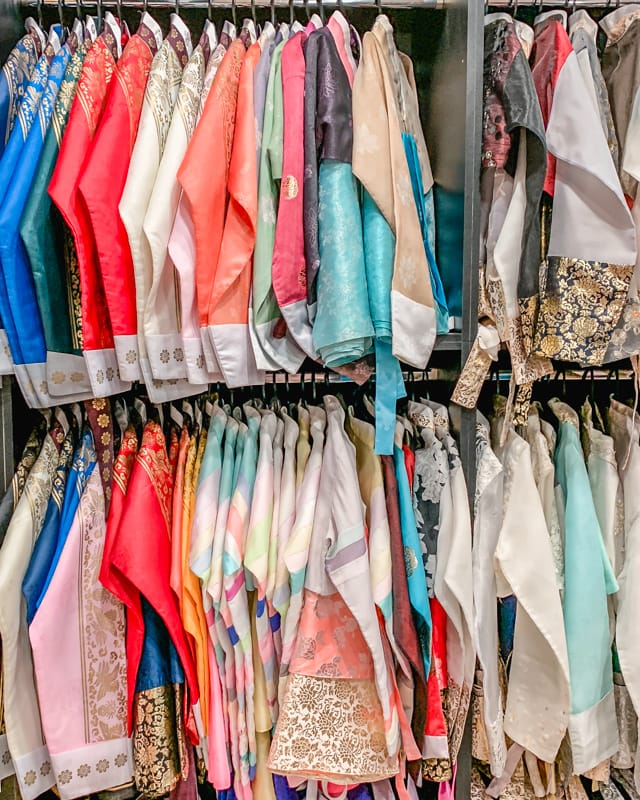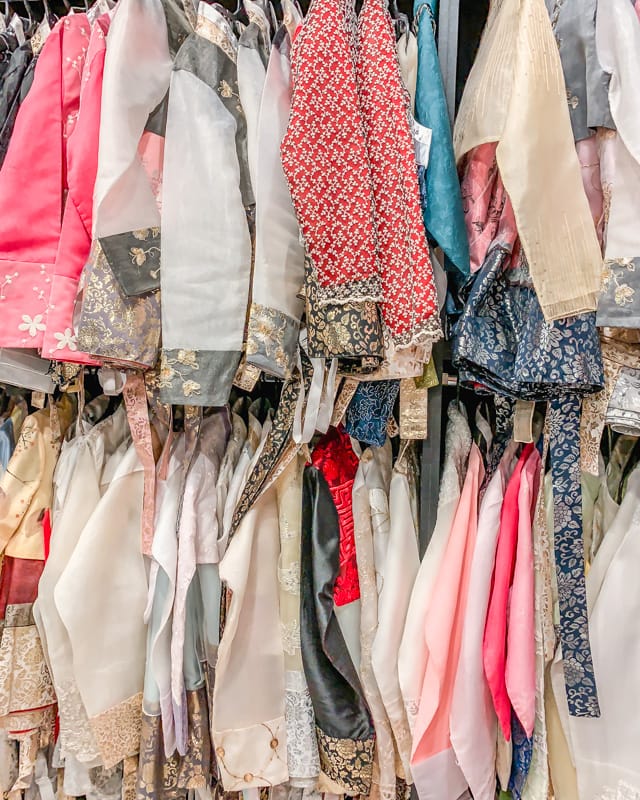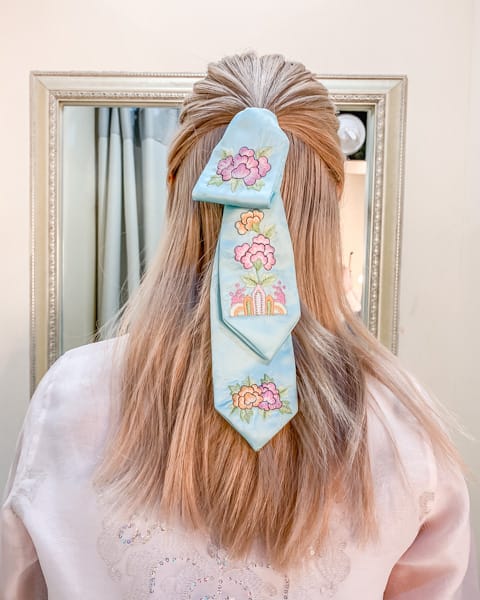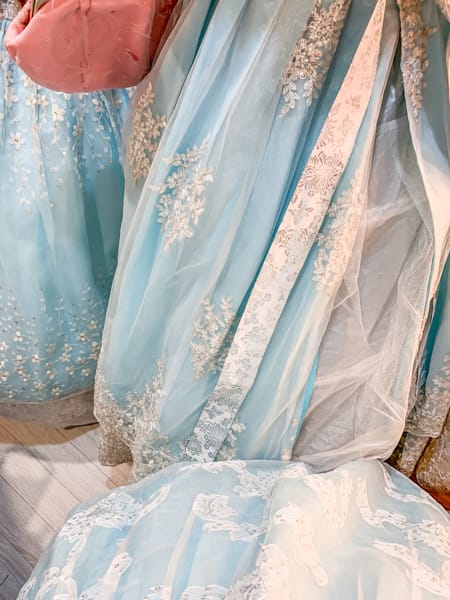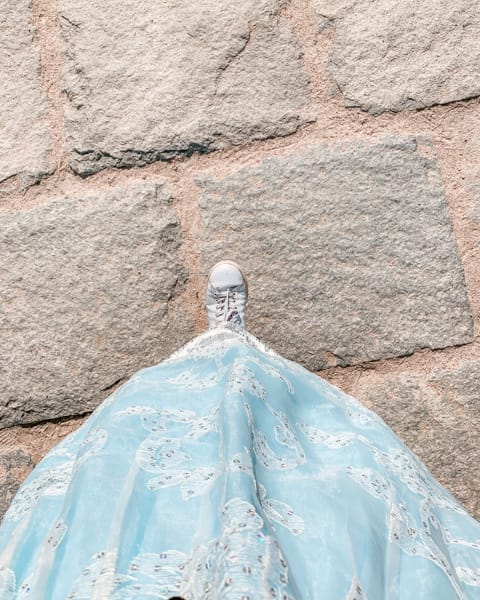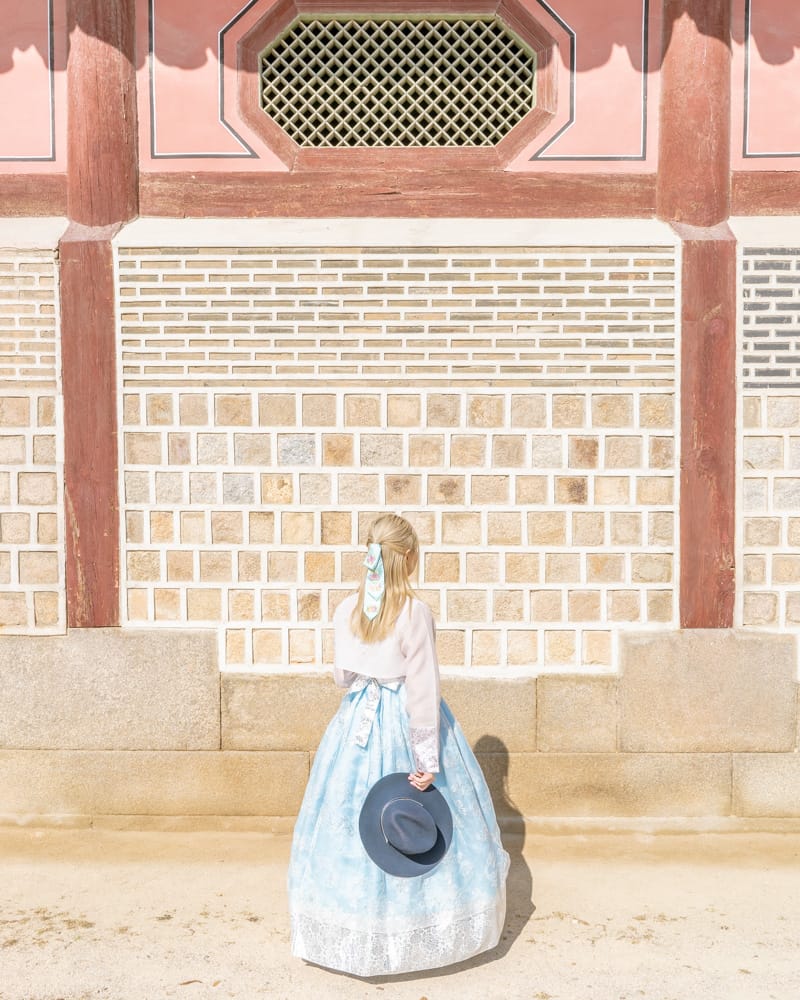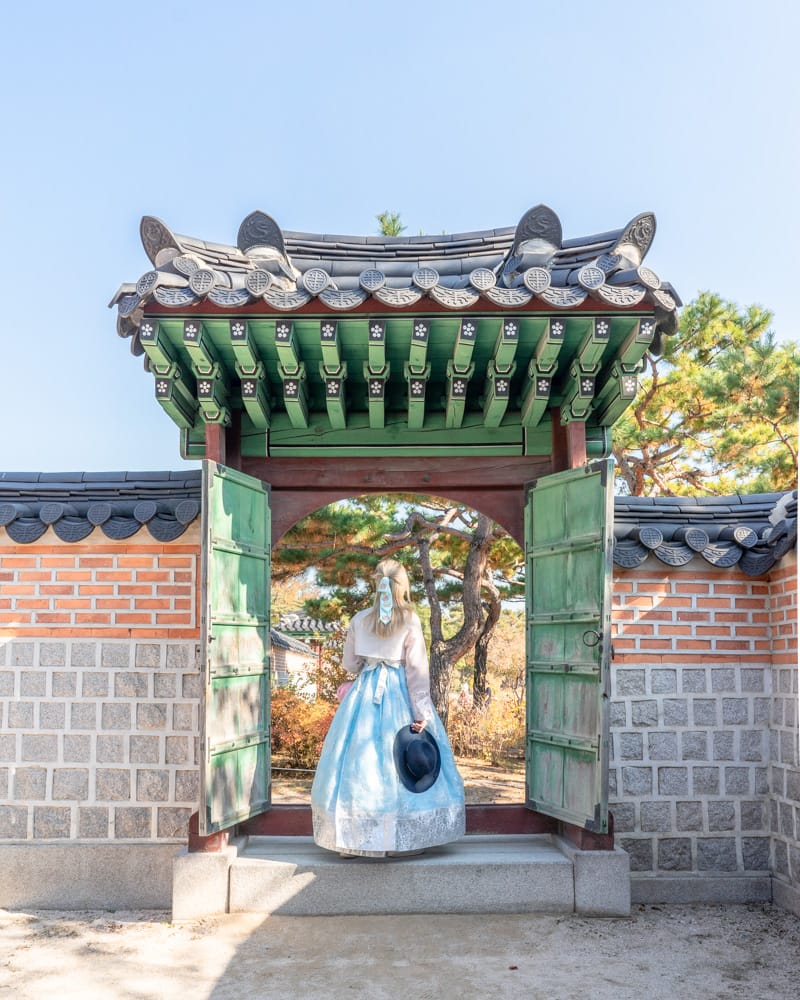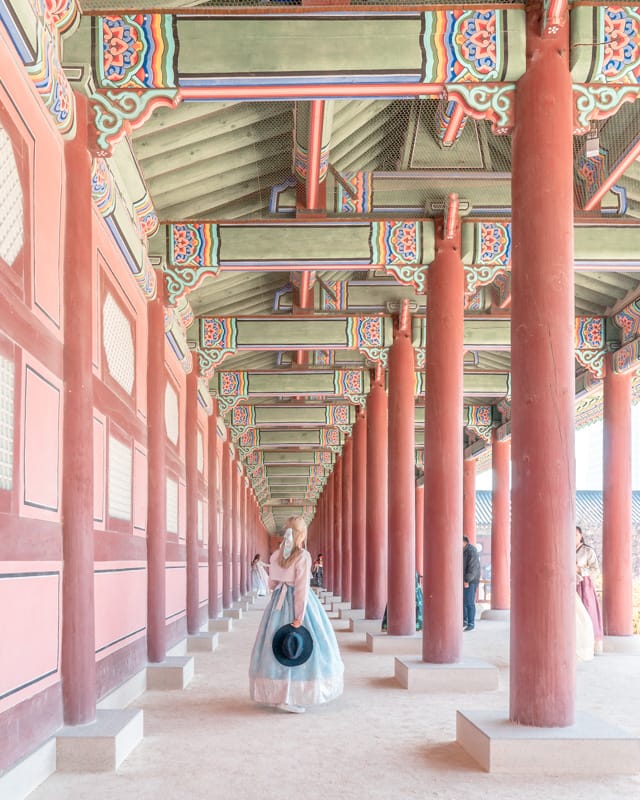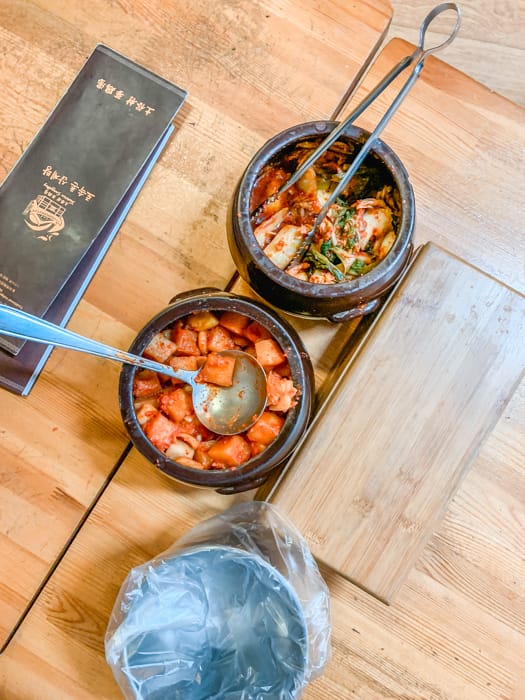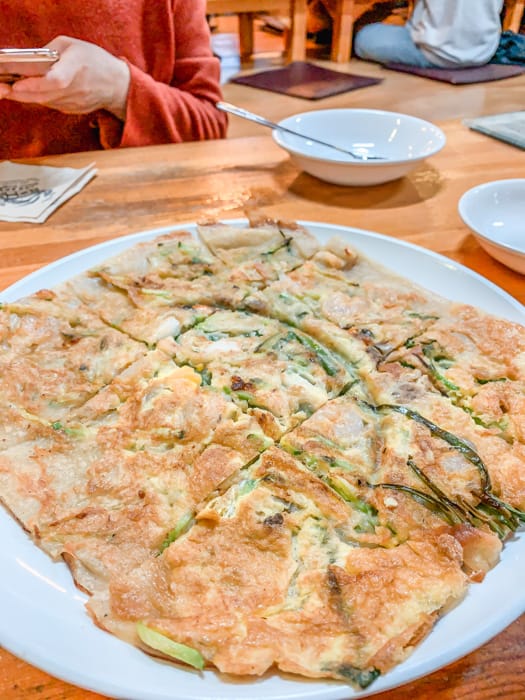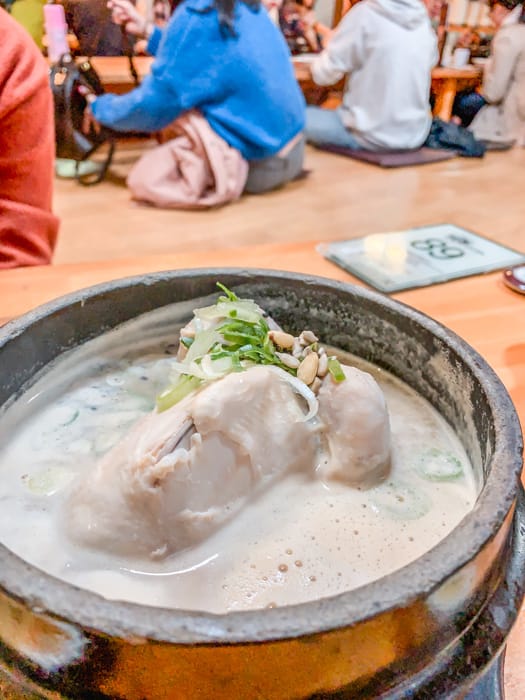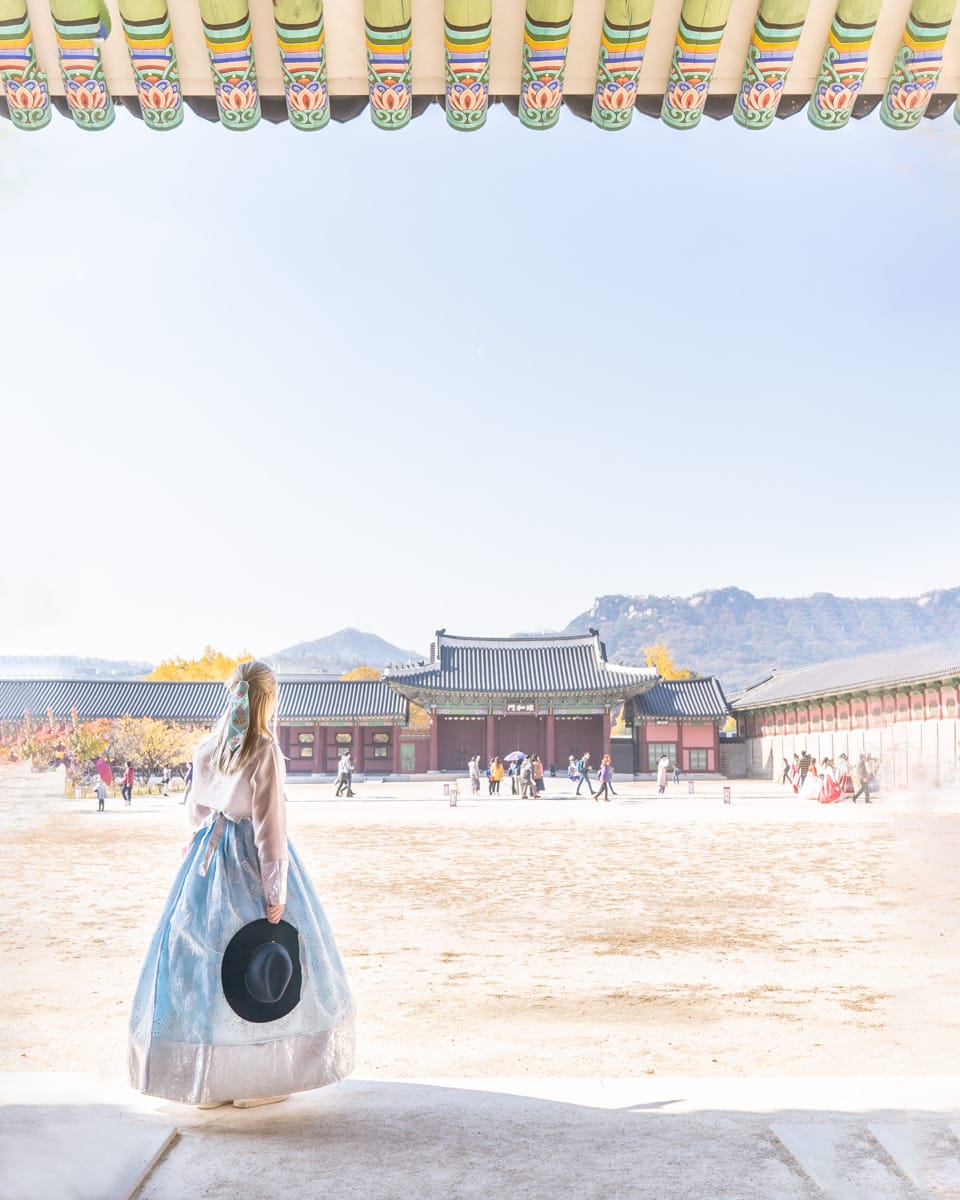
One of the best ways to explore South Korea and experience its culture by wearing a hanbok while visiting a palace in Seoul. There are 5 main grand palaces in Seoul, includes Gyeongbokgung Palace, Changdeokgung Palace, Changgyeonggung Palace and Deoksugung Palace, and Gyeonghuigung Palace. The palace’s architecture is from the Joseon Dynasty gives you a small glimpse into the history of the city.
Interested in culture and history, I wanted to try a hanbok, the traditional Korean dress, during my visit to Seoul. Having tried a Kimono, the traditional dress in Japan, I was interested in trying the Korean equivalent. If you have the chance during your visit, it’s definitely worth a try. It’s a lovely cultural experience and quite fun. Here is my guide to hanbok rental and the best palaces and places to visit while wearing a Hanbok.
HANBOK ITINERARY GUIDE
Where to rent a hanbok?
There are many places to rent a hanbok and with some free rental options at tourist centres in Seoul. To make the most of our time, I chose the Seohwa Hanbok for its prime location, close to Gyeongbokgung and other tourist spots. It has intricately-designed hanbok garments and is also quite affordable. Most Hanbok rentals in Seoul offer clothing for both men and women, even for children too. Usually, hanbok can be rented for half or a full day, we rented it for half the day (
Note: it’s best to rent between Wednesday and Sunday, as most palaces are closed Mondays and Tuesdays.
Admission to Seoul’s Palaces is FREE when wearing hanbok!
We arrived in the early morning to pick our hanboks and get dresses hoping to avoid the crowds. But by the time we got there, there were so many people waiting at the rental shop already. Since hanbok rentals can get quite busy in the morning, I’d recommend to book and arrive early.
What is a hanbok?
Hanbok is clothing from the Joseon period. It is a set of 2 pieces for women, an upper jacket called jeogori (저고리) and the skirt known as chima (치마). For men a jeogori (저고리) and pants known as baji (바지). Women hairstyles are commonly made into a braid, and a large ribbon is attached to the end, is known as daengi-meori (댕기머리).
We had a variety of choices to pick from, before getting fitted. The hanbok collection was of great quality, with a variety of colours and each with a unique pattern. There were so many beautiful designs, it was hard to pick one. In the end, I chose a blue one (of course) with a simple and elegant pattern.
→ More: Day trip to Busan from Seoul
After getting fitted, we had the option to do our hair and makeup. We didn’t need to do our makeup, so we chose some accessories and fixed our hair. This place has a dressing room with mirrors and accessories to choose from. Ribbons, headbands, flower crowns, and bag accessories were available. They do not provide hairdo service but have hair straighteners available to use. Traditional shoes are not offered at this rental shop, so remember to wear some comfortable shoes for the day. I found shoes didn’t matter so much as we didn’t notice them anyway since it was covered by the dress.
By the time we were ready, an hour had passed. Hoping to avoid crowds we visited Gyeongbokgung Palace, across the road. Unfortunately, it was hard to avoid the crowds at the surrounding popular tourist spots. However, there are so many lovely spots around the palace to get nice photos. We walked around the palace and spotted some quieter areas. You’ll spot many others dressed in hanbok, it’s quite popular.
SEOHWA HANBOK
Where to book: KKday
Open: daily 9:00AM to 7:00PM
Where: B1, 11 Jeokseon-dong, Jongno-gu, Seoul
Nearby: Gyeongbokgung and Changdeokgung Palace
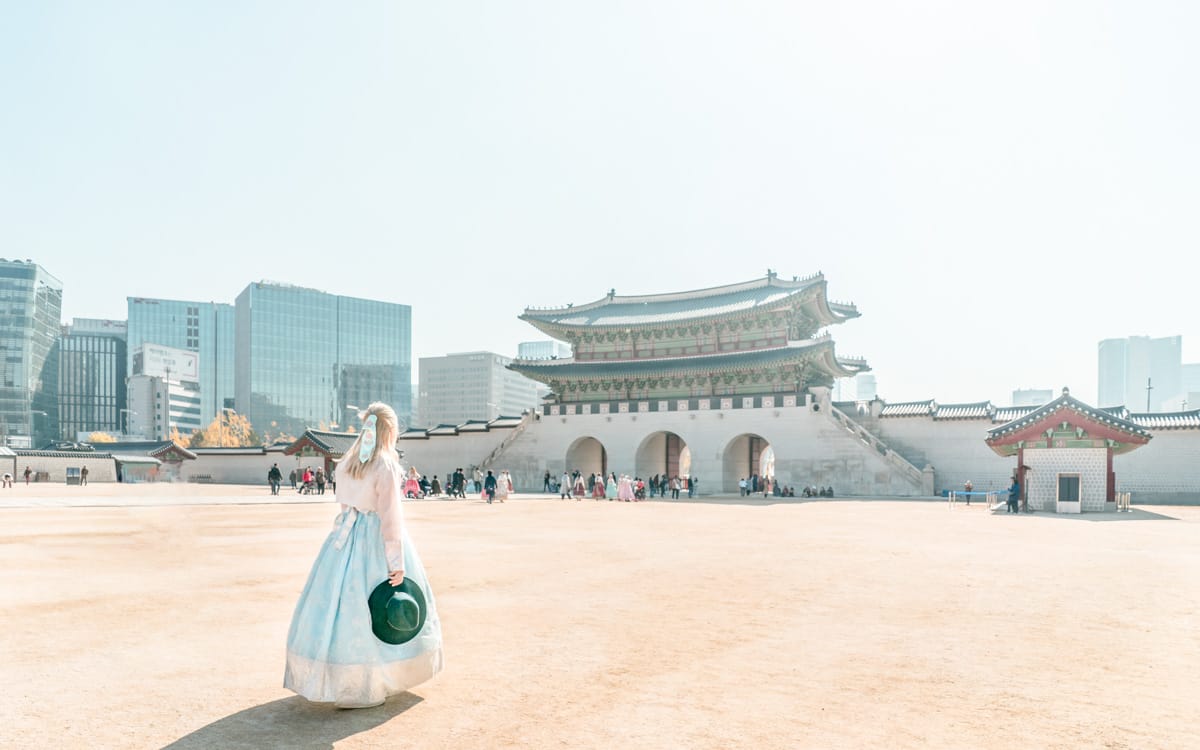
What to do and where to go? Visit Palaces in a Traditional Hanbok:
Gyeongbokgung Palace (경복궁, 景福宮)
Our first stop was Gyeongbokgung Palace, one of the oldest and largest Grand Palaces built during the Joseon Dynasty (1392-1910). We entered through the Gwanghwamun Gate, the main gate of Gyeongbokgung Palace and then walked around the Gwanghwamun Square at the front. This gate was the most important during the Joseon dynasty, built in 1395. The palace area is huge so we only visited some areas. There are ponds, hidden gardens, and unique architectural structures within. Some sections were closed for renovations, but we still managed to find some nice places to walk around.
Daily at 10:00AM and 2:00PM the Changing of the Royal Guard (Sumunjang) ceremony is held (except Tuesdays). The ceremony is in front of Gwanghwamun or the main gate of Gyeongbokgung.
Where: 161, Sajik-ro, Jongno-gu, Seoul
Open: March-May/September-October: 09:00-18:00 (Closed Tuesdays)
Admission: Adults (ages 19-64) 3,000 won, Children (ages 7-18) 1,500 won
* Admission is free when wearing hanbok
→ More: Explore Nami Island: a day trip from Seoul
Changdeokgung Palace (창덕궁, 昌德宮)
East of Gyeongbokgung Palace is Changdeokgung Palace, also known as Donggwol, the Eastern Palace. This was the 2nd palace built after Gyeongbokgung Palace and is one of the most preserved royal palaces from the Joseon Dynasty, a UNESCO World Heritage Site in 1997. The well preserved Korean palace and architecture makes for great photo spots. We didn’t have enough time, but at the rear of the palace, there is Huwon Secret Garden (you will need to book a tour in advance).
Nearby: Gyeongbokgung Palace
Where: 99, Yulgok-ro, Jongno-gu, Seoul
Open: February-May/September-October: 09:00-18:00 (Closed Mondays)
* November-January: close at 17:30 / June-August: close at 18:30
Admission: Adults (ages 19-64) 3,000 won, Children (ages 7-18) 1,500 won
* Admission is free when wearing hanbok
Changgyeonggung Palace (창경궁, 昌慶宮)
Changgyeonggung Palace is right next to Changdeokgung. It was a residence for the royal as a secondary palace. It was originally built as ‘Suganggung’ by King Sejong and the third palace built by the Joseon dynasty. This royal palace was uniquely designed and built in an east-west orientation, as opposed to the strict north-south orientation of typical royal designs.
We visited during autumn and saw the lovely autumn foliage surrounding the palace. Spring is also a great time to visit to see the cherry blossoms.
Nearby: Changdeokgung Palace
Where: 185, Changgyeonggung-ro, Jongno-gu, Seoul
Open: February-May/September-October: 09:00-18:00 (Closed Mondays)
* November-January: close at 17:30 / June-August: close at 18:30
Admission: Adults (ages 19-64) 1,000 won, Children (ages 7-18) 500 won
* Admission is free when wearing hanbok
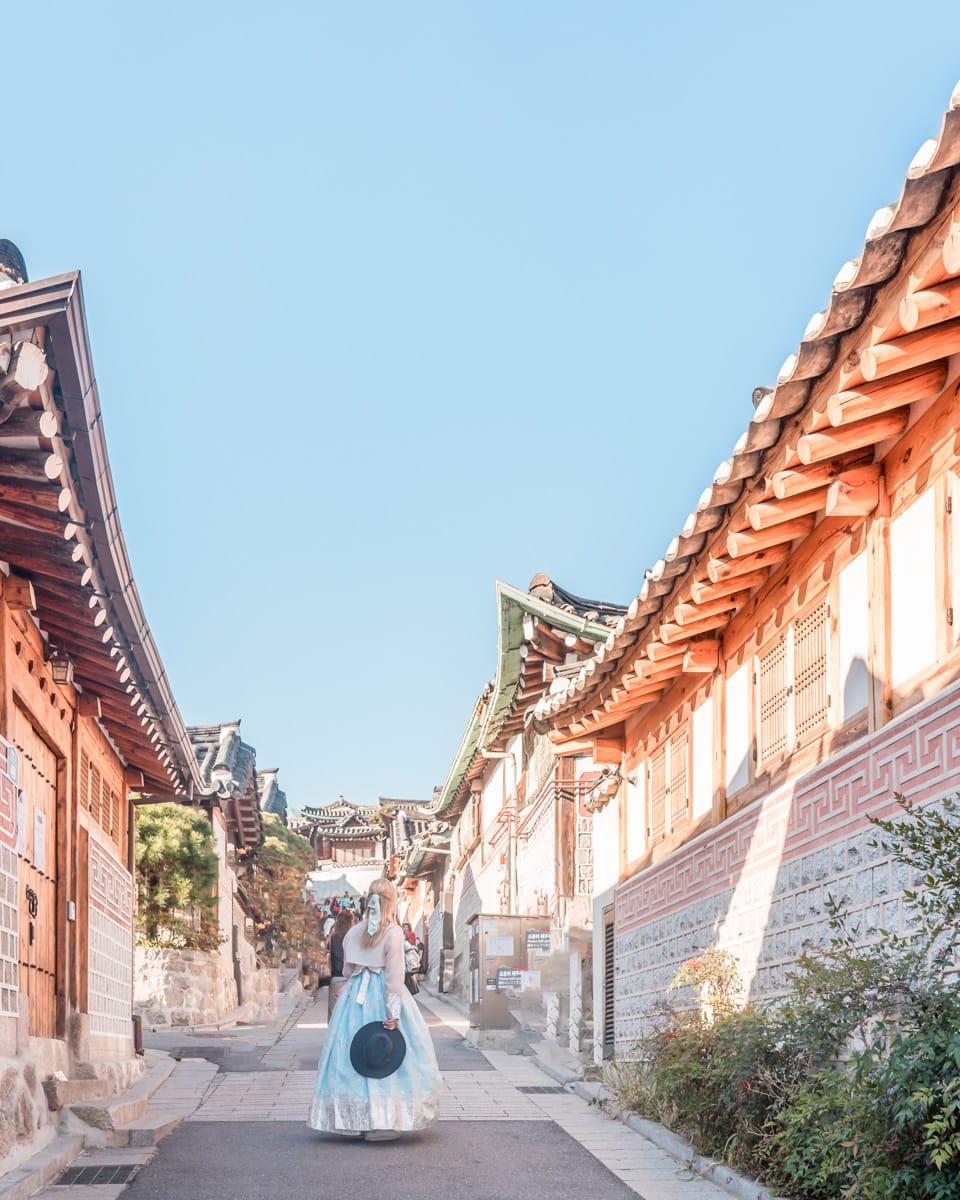
Bukchon Hanok Village (북촌한옥마을)
Nearby the Gyeongbokgung and Changdeokgung palaces
Nearby: Gyeongbokgung and Changdeokgung palaces
Where: 37, Gyedong-gil, Jongno-gu, Seoul
Admission: Free
→ More: Explore Nami Island: a day trip from Seoul

Kimchi 
Kimchi pancake 
Ginseng Chicken Soup
Eat at Tosokchon Samgyetang (토속촌 삼계탕)
After walking around and taking pictures, it was time for some food! We went to the most popular Tosokchon Samgyetang for Ginseng Chicken Soup, a must-try! Peak hours are extremely busy so expect a line during lunch.
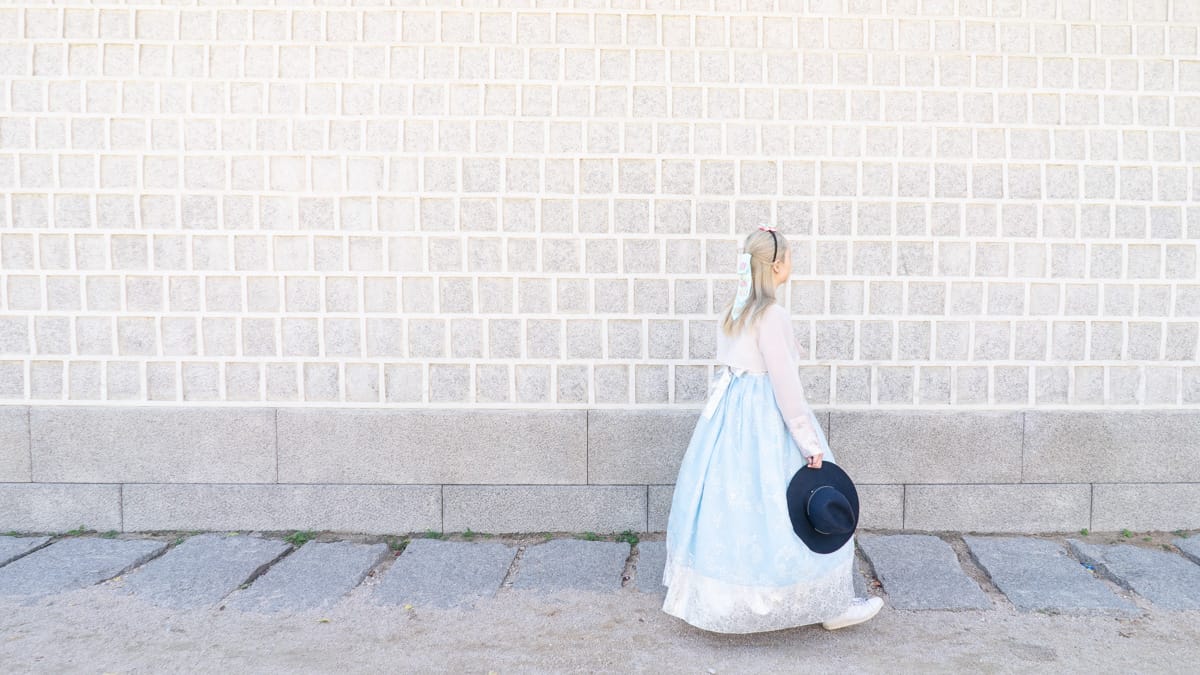
Discovering Seoul palaces
This was one of my highlights from Seoul! Walking around the Seoul palaces in hanbok was such a unique and unforgettable experience. I’d definitely recommend if you have enough time! Even if you are unable to dress in a hanbok, these places are worth a visit.
Best day trips from Seoul, visit Busan. Check out the top things to do in Busan.
